October 27 - November 2, 2013: Issue 134
The Year of the Snake
By Lynleigh Greig
Well, it’s that time of the year again when our little slithery friends come out to play.
During winter, snakes go into a form of semi-hibernation called brumation. When the weather starts to warm up, they head out in search of food and water. They are generally very secretive and seldom come out when people are about. However, if you are lucky enough to happen across one of these magnificent and misunderstood creatures, please just leave them alone and appreciate them from a distance. They find us very scary.
Some of the most common snakes we are likely to encounter on the Northern Beaches are:
Diamond Pythons (Morelia spilota) : harmless to humans
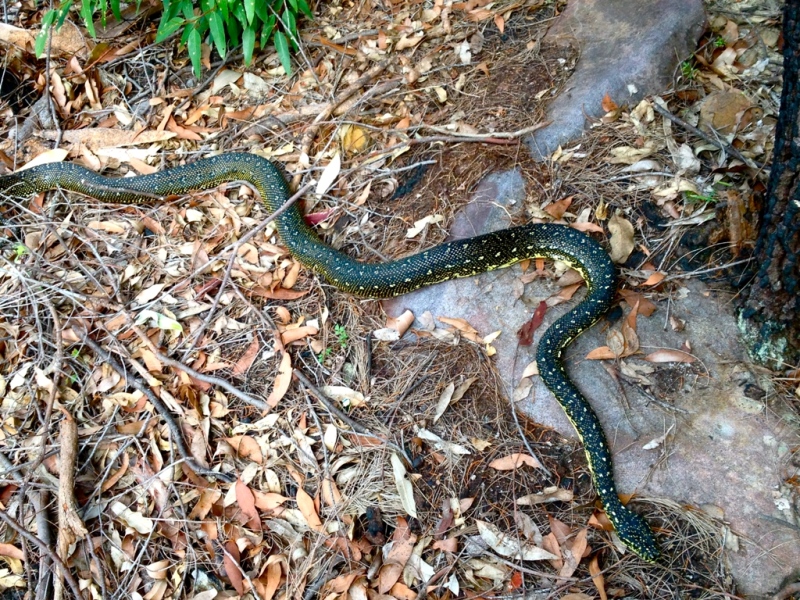
Diamond pythons are predominantly black in colour with yellow spots arranged in diamond-like shapes. The average adult size is between 2m and 3m.
Diamond pythons are typically placid in nature and reluctant to bite. They are mostly arboreal (tree-dwelling) but have been seen on roof-tops, curled up under trees or draped over fence-tops. They prey on rodents, lizards, birds and mammals such as possums and are constrictors.
They are a wonderful addition to your property as they eat rodents, are placid, pose no threat and they are very beautiful.
Green Tree Snakes (Dendrelaphis punctulata) : harmless
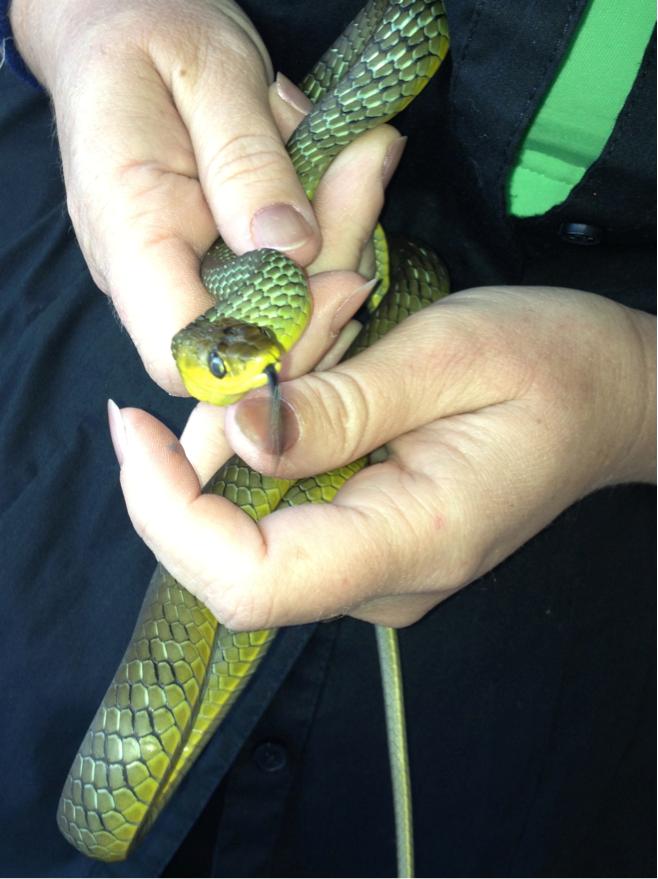
The Green Tree Snake is very slender, is greenish-blue on the body and bright yellow on the belly. They have big black eyes and a very long, thin, prehensile tail. They reach lengths of around 1.2m.
They are often seen on the ground which surprises people – given that they are tree snakes. They come to ground to prey on frogs, skinks and fish.
These little snakes are very agile and super-fast! They’re gorgeous and can actually be quite friendly, if they don’t feel threatened.
Golden-crowned Snake (Cacophis squamulosus) : mildly venomous but not considered dangerous
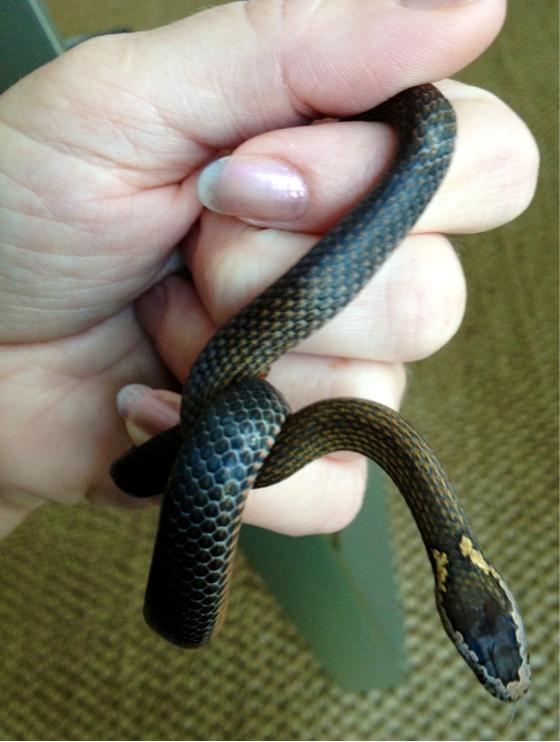
These little snakes are very secretive and are nocturnal so you’d be lucky to encounter one. They’re dark brown to grey in colour with a pink belly. They have a yellowish ‘halo’ or crown – hence their name. Golden-crowned snakes tend to reach lengths of between 50cm – 75cm. They feed predominantly on lizards and occasionally frogs.
They are wonderful little snakes but they often get into trouble when cats pounce on them and bring them inside.
Marsh Snake/Black-bellied Swamp Snake (Hemiaspis signata): mildly venomous but not considered dangerous
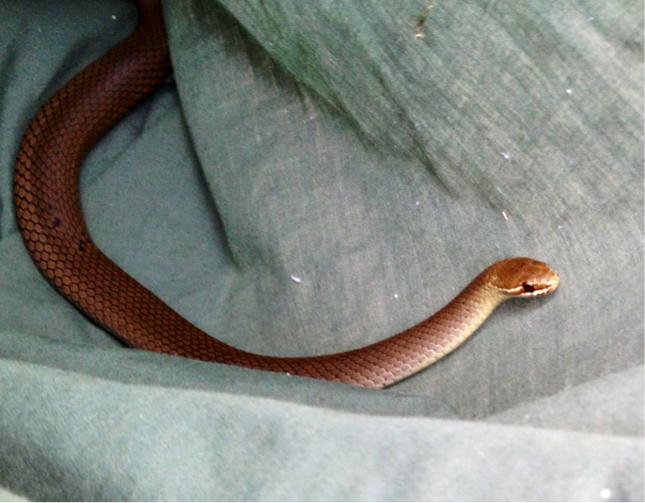
Marsh snakes or Swamp snakes vary considerably in colour, from olive green to dark brown with a black or grey belly. They are often mistaken for Brown snakes. Marsh snakes have two white stripes on their faces that distinguish them from Brown snakes. They can reach lengths of 1m.
You will often find them in moist areas, wetlands and creeks (or well-watered gardens) and their diet consists mainly of frogs and skinks.
Red-bellied Black Snake (Pseudechis porphyriacus): Venomous but generally not aggressive
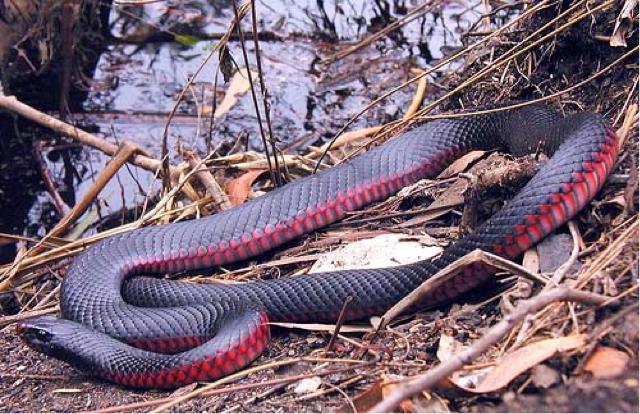
The Red-bellied Black Snake is a gorgeous glossy black on top and red on the lower sides and belly. The average-sized specimen is 1.2m - 1.5m. They are often found near water and are excellent swimmers! Their diet consists primarily of frogs. They also prey on reptiles and small mammals and sometimes even other snakes, including those of their own species.
They are not an aggressive species and their first form of defence is always to escape. They are often just moving through your property and should just be left alone.
________________________________________________
Other snakes you may encounter are: Eastern Brown snakes, Death Adders, Eastern Tiger snakes – although these are sighted infrequently on the Northern Beaches.
What to do if you find a snake:
1. Don’t panic
2. Keep children and pets away from the snake
3. If the snake is in the garden, keep an eye on it and call for advice
4. If the snake is in the house, close the door to the room it’s in and call for advice
Snakes have every right to be here and should be treated with respect.
Do NOT attempt to kill ANY snake!!! It is illegal and dangerous. Generally, a snake will only become defensive if it is threatened. Leave them in peace and they will leave you in peace. Or call Sydney Wildlife to have the animal relocated.
Sydney Wildlife: 9413 4300 or Sydney Snake Catcher (fees apply): 1300 599 938
Report and Pictures by Lynleigh Greig, 2013.